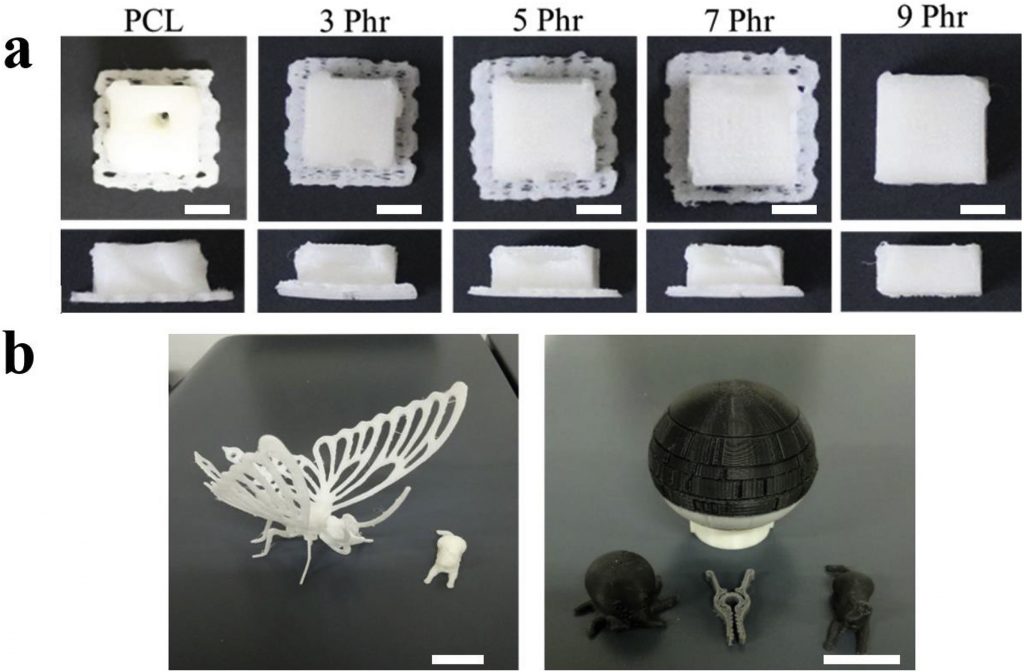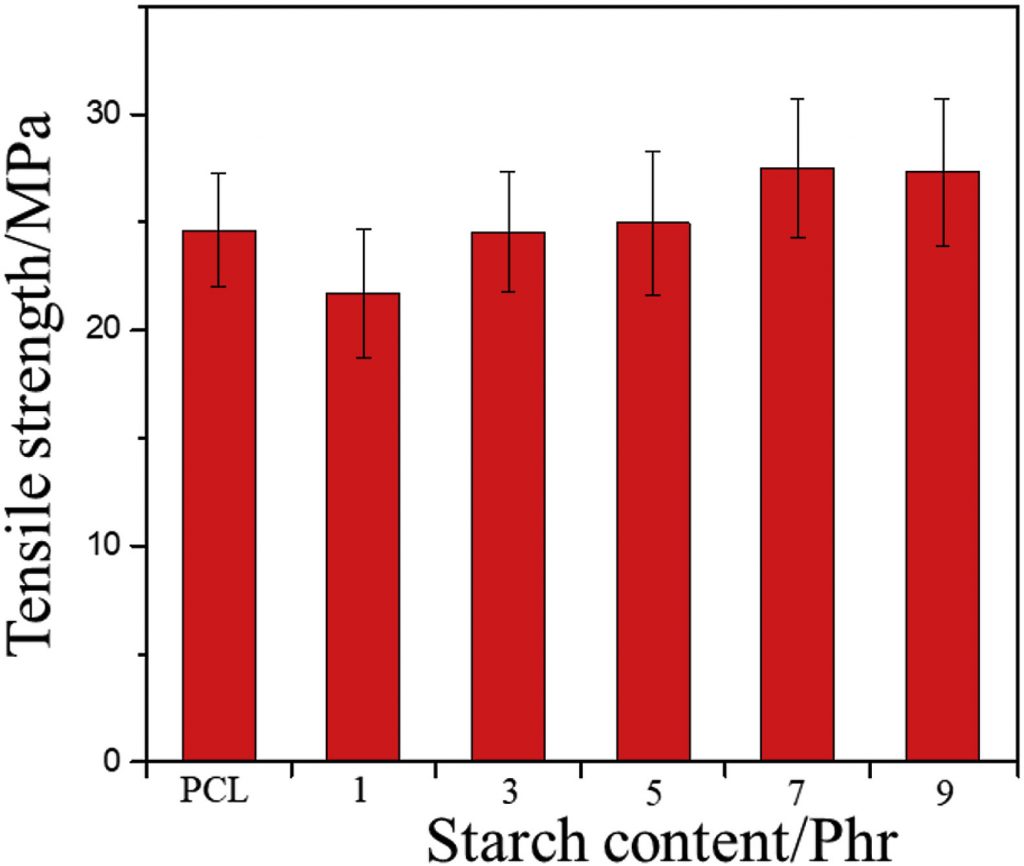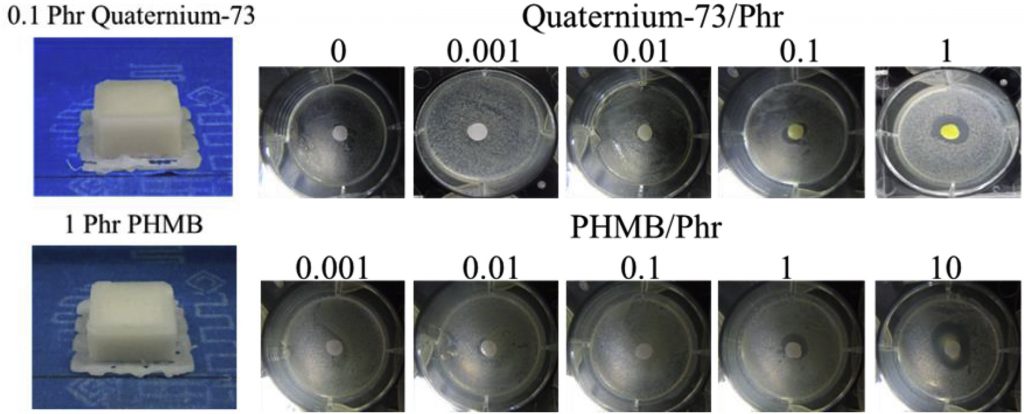Researchers from the Beijing University of Chemical Technology have developed a starch-infused polycaprolactone (PCL)-based composite filament for use with low-temperature FDM machines. The filament was then further functionalized via the addition of bioactive ingredients, giving it antibacterial properties. Here’s how they did it:
PCL-starch composite filament
PCL is known for its low melting (60°C) and glass transition (-60°C) temperatures, making it very flexible without sacrificing toughness. The polymer is also biodegradable, so it is considered one of the safer options for FDM 3D printing. PCL does, however, have a slow solidifying rate and less than ideal melt strength, so the researchers wanted to see if they could do something about that.
The team set out with the goal of investigating the effect of polysaccharide, or starch, on PCL’s mechanical and crystallization properties. Off-the-shelf PCL, soluble starch, corn starch, and potato starch were all dried separately in an air dryer at 50°C for two hours. 100g of the dried PCL was mixed in with various masses (1g – 11g) of dried starch and the mixtures were thoroughly thermally blended using a high speed electronic mixer. The samples were pelletized and drawn into filament wires.

A universal testing machine was used to measure the tensile strength of each filament sample. When averaged out, starch was found to have no significant detrimental effect on the tensile strength of PCL, and even increased it in the higher ratio mixtures. This was important as the filament would be under constant strain when being pulled by the stepper motors of an FDM system.

Early observations at the filament preparation stage also found the starch to increase the crystallization temperature and crystallization rate of the filament. This meant that the melt strength and solidification rate of the composites was higher than that of pure PCL, making them easier to print with and stronger during the printing process.
Antibacterial additives
After successfully creating a novel composite filament with physical properties greater than that of PCL, the team turned to functionality. They wanted to go above and beyond, so they added two organic antibacterial agents, ammonium-73 and PHMB, to the composite filament mixes.
Antibacterial samples with various organic agent concentrations were 3D printed using the composite filament, and placed in petri dishes with cultures of E. coli and S. aureus. As expected, the inhibition zones of the petri dishes (the areas of zero bacterial growth) broadened with higher concentrations of antibacterial agents. Due to the low printing temperature of the filament, the organic agents did not denature and remained active throughout the printing process. This result validated the researchers’ method of producing and functionalizing low-temperature composite filaments with antibacterial properties.

Further details of the study can be found in the paper titled ‘Polycaprolactone/polysaccharide functional composites for low-temperature fused deposition modelling’. It is co-authored by Yu-Qing Zhao, Ji-Hao Yang, Xiaokang Ding, Xuejia Ding, Shun Duan, and Fu-Jian Xu.
Polymer filament research is one of the hottest areas of 3D printing, with research institutions and independent companies alike pouring resources into the field. Earlier this year, Andaltec, a Spanish research centre focused on plastics, announced that it was developing a new set of active polymers for use in the 3D printing of medical devices. Elsewhere, the U.S. Army has created a new multi-polymer filament designed to be used with low-cost FDM systems. The high strength filament is expected to aid in the field of battle, producing mission critical parts in a timely manner at a fraction of the cost of traditional parts.
The nominations for the 2020 3D Printing Industry Awards are now open. Who do you think should make the shortlists for this year’s show? Have your say now.
Subscribe to the 3D Printing Industry newsletter for the latest news in additive manufacturing. You can also stay connected by following us on Twitter and liking us on Facebook.
Looking for a career in additive manufacturing? Visit 3D Printing Jobs for a selection of roles in the industry.
Featured image shows bacterial growth in the presence of the antibacterial agents. Image via BUCT.



